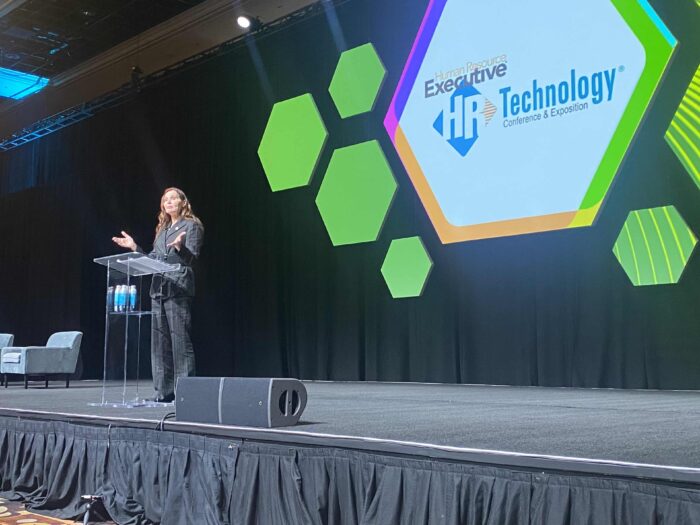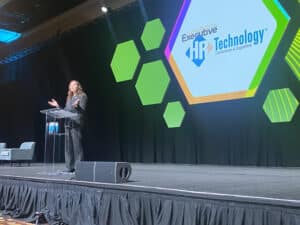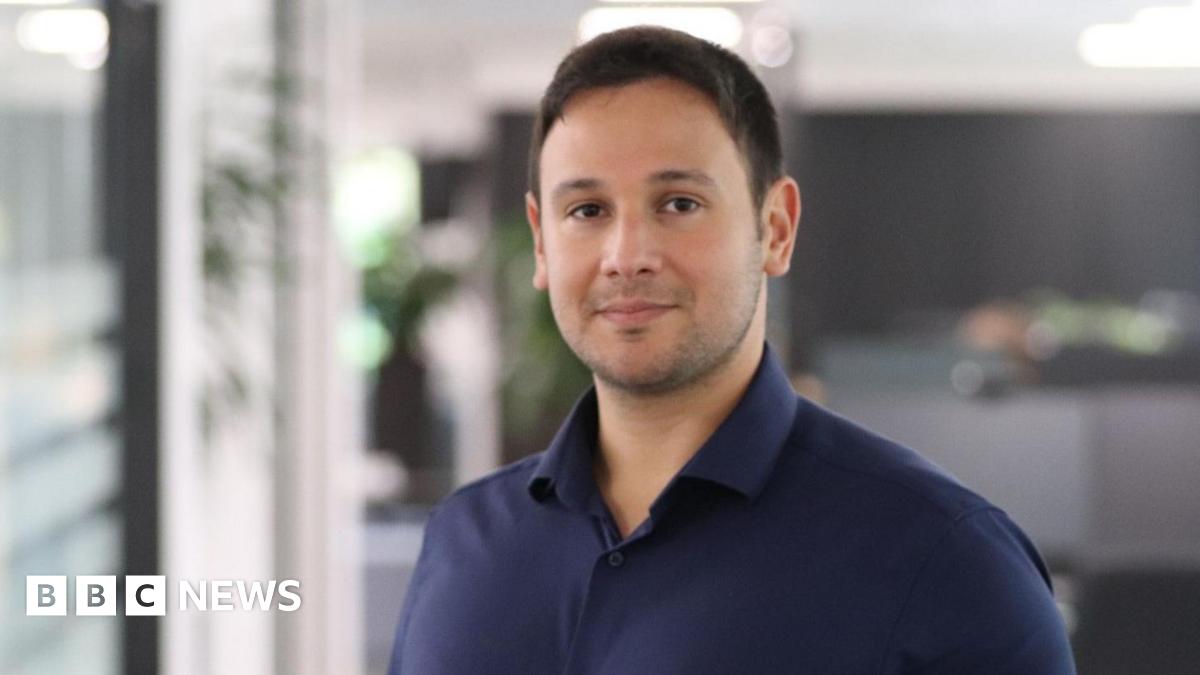Geena Davis says that she, quite literally, almost “died of politeness” as a child—inspiring the name of her 2022 memoir.
At 8 years old, she and her parents were riding in a car with a relative whose poor eyesight had him swerving into traffic.
“My parents would rather die and take their child with them than risk being impolite—to somebody who was also going to die,” she shared during her HR Tech Conference keynote on Tuesday.
Her life today is a far cry from the “terminal politeness” that she says colored every aspect of her adolescence: She is a two-time Academy Award-winning actor, the founder of the Geena Davis Institute on Gender in Media and a special envoy to the United Nations. She says her legendary acting career—which includes iconic roles in classic films like Thelma & Louise and A League of Their Own—ultimately emboldened her to abandon her politeness and work to create inroads for female representation in media.
“Becoming an actor gave me the opportunity to be a far bolder person on screen than I ever was in life,” she says. “They say ‘fake it ’til you make it.’ I was acting ’til I became it.”
Pursuing her ‘untapped’ potential
One of Davis’ most well-known roles is Dottie Hinson from the 1992 baseball classic A League of Their Own. When she started filming, however, Davis says she had no idea how even to play baseball—or how to play any sport, for that matter.
However, she was complimented on her “untapped athletic ability” during filming.
“It made me feel like it was OK to take up space in the world, to inhabit my body because I could do things with it—that I wasn’t faking it, I deserved to be successful,” she says. “Sports dramatically improved my self-image.”
Throughout her career, she challenged herself to learn sports, including horseback riding, Taekwondo, fencing, ice skating, pistol shooting—and even ice skating while pistol shooting. Those experiences spurred her to learn archery off the set, and after just 2½ years of honing her craft, Davis was a semi-finalist in the Olympic trials in archery.
Her immersion in the worlds of archery and film collided about a decade ago when her coach pointed out an interesting reality: The sport had traditionally been dominated by men and boys, but in 2012, the number of women and girls taking up archery skyrocketed 105%—to the point that they outnumbered their male counterparts for the first time.
The driver? That was the year that the films Hunger Games and Brave debuted—both featuring female protagonists skilled with a bow.
The making of a data geek
Davis says complicated female representations in Hollywood have been a given for decades. But she realized the extent of the issue when watching a kids’ show with her then-toddler nearly two decades ago. She says the lack of female characters floored her.
“As a mother in the 21st century, I thought, ‘Surely, by now, we’re showing kids that boys and girls share the sandbox equally,’” she says. Davis started talking informally to female friends and fellow parents about certain movies—and they universally didn’t notice the lack of women.
See also: HR tech’s role in pursuing a workforce for the future
So, she used her clout to connect with directors and studio executives and found a similar insistence that gender parity exists in kids’ media.
“I think this could be completely unconscious on their part,” she recalls thinking.
Tapping into the boldness she says her career journey imparted, Davis founded her research institute to uncover and raise awareness about media representation and its impact on society.
“I wanted to get the data because no one seemed to be noticing this lack of female characters,” she says. “And that took my life in an entirely new direction as a data geek.”
The institute commissioned the largest-ever study on gender representation in children’s TV and movie programming, finding that for every one female speaking role, there were, on average, four male speaking roles. When females were depicted, they were often narrowly stereotyped and hypersexualized.
“By feeding kids a seriously unbalanced world from the beginning, we were unwittingly training generation after generation to see women and girls as less valuable than men and boys and less capable,” Davis says.
Realities of representation
In the 20 years since the founding of the Geena Davis Institute on Gender in Media, progress has been made: At that time, only 11% of leads in family films were women; today, there is gender parity. Parity also now exists for both leads and supporting roles in family TV programming.
“We’ve come a really long way,” Davis says.
However, occupational representation is still imbalanced—men are much more likely to be depicted in STEM roles, for instance—and challenges persist when it comes to intersectional representation.
Media depictions both reflect—and fuel—gender inequality in all sectors of our society, Davis notes. For instance, the United States ranks 70th—between Iraq and Estonia—for representation of women in government.
Positive representations in media, however, can create startling—and fast—change. Her organization’s research found, for instance, that a full 63% of women now in STEM careers cite the character Dana Scully of sci-fi hit The X-Files as their inspiration for entering the field.
“In the time it takes to create a new TV show or movie, we can change what the future looks like,” she says, “so that media can be the cure for the problem it created.”
It’s a reality, Davis says, that can help today’s HR leaders with their own work to advance gender equality in the workforce. It comes down to recognizing the issue of representation—and using data to change it.
“We have to stop creating something that’s almost impossible to fix later on,” she says. “Think how dramatically different our world would be if people were free of these biases.”
Credit: Source link












